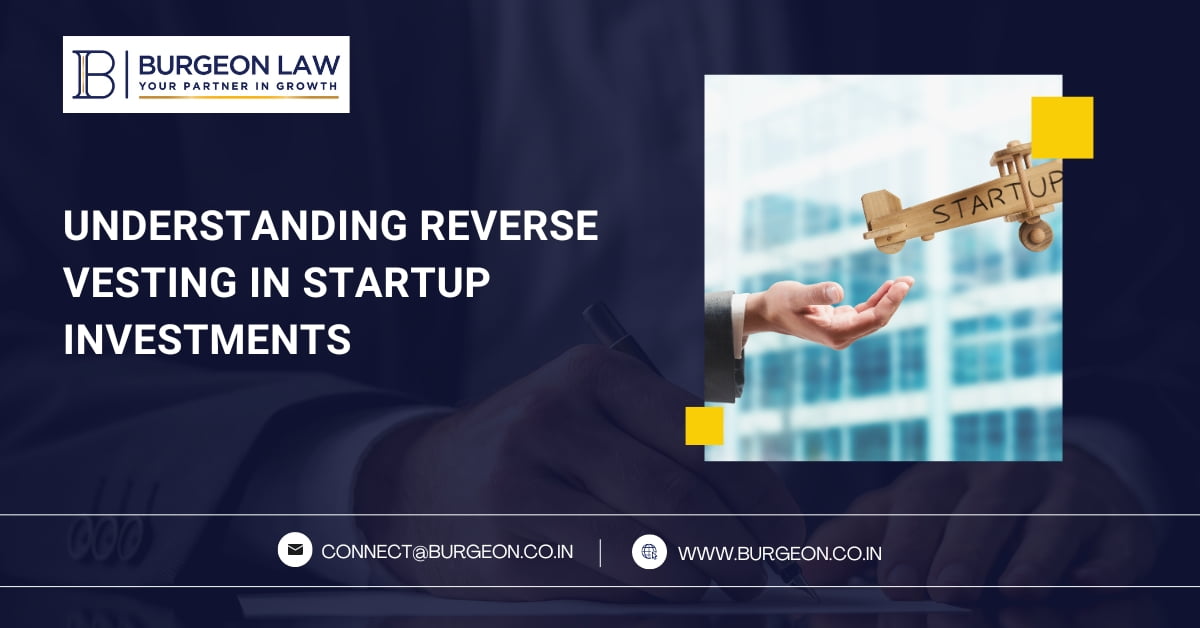Table of Contents
ToggleWhat is reverse vesting?
For founders wanting to raise external capital, one of the critical clauses that they will time and again review and negotiate is a ‘vesting’ on their shares. What this essentially means is that the founder will need to remain employed with the company over a fixed period to get access to economic value of the shares that they legally own.
This concept is similar to vesting of employee stock options (ESOPs) for employees, where typically a percentage of the ESOPs vest every year. While for ESOPs, a progressive vesting is applied as ESOPs are not shares by themselves and only convert into shares once the options are exercised post the vesting, given founders of a start-up legally hold shares when the vesting is applied to them, the construct is termed as ‘reverse vesting’.
Why is reverse vesting important for investors?
While investing in start-ups, one of the key overall objectives of investors is to tie the founders down to the start-up and incentivize them to dedicate their time and attention towards the business. Therefore, investment documentation will typically state a period over which the reverse vesting of shares will occur.
Not only does this construct ensure retention of founders, it also makes the start-up attractive for new investors and ensures that inactive founders, having high equity ownership, do not get benefit of shares for which they have not worked.
What happens if a founder leaves a start-up during the vesting period?
In the event a founder was to leave the start-up during the vesting period, depending on the circumstances in which the separation occurs, there would be an impact on such founder’s shares.
Typically, in a termination for ‘cause’ scenario (i.e., where the founder has undertaken a pre-defined mala fide action), the start-up may require all the vested and unvested shares to be clawed back at minimum value; and where the termination is without ‘cause’, the start-up may require all the unvested shares to be clawed back, while the outgoing founder may retain the vested shares.
What should Founders look out for in the investment documentation?
While the reverse vesting construct has various overall advantages for the investors and the start-up alike, it is a high-risk clause for a founder as a termination related scenario could result in a founder losing access to all or a portion of their shares, and therefore the economic value or upside associated with them. Therefore, the following should be considered by founders in shareholders’ agreements:
- Upfront vesting: While for early-stage deals (pre-seed or seed level), the upfront vesting may be nil or minimal, while raising subsequent rounds, it should be ensured that the founder gets benefit for the vesting which has already occurred.
- Vesting frequency: Vesting can be either monthly, quarterly or yearly, depending upon the negotiations with the investors.
- Length of vesting: Typically, vesting initially occurs over a 4-year period. However, in subsequent rounds at later stages, the vesting period over the unvested shares can be negotiated to be lower as well.
- Accelerated Vesting: Founders can also ask for accelerated vesting in the event of a liquidation event or unfortunate events like death or permanent disability.
- Determination of ‘Cause’: The definition of ‘cause’ should be drafted in a manner to provide for identified and objective triggers. Determination of certain triggers such as ‘fraud’ and ‘willful misconduct’ can be undertaken by independent third-party investigators to provide impartiality / objectivity in the process.

